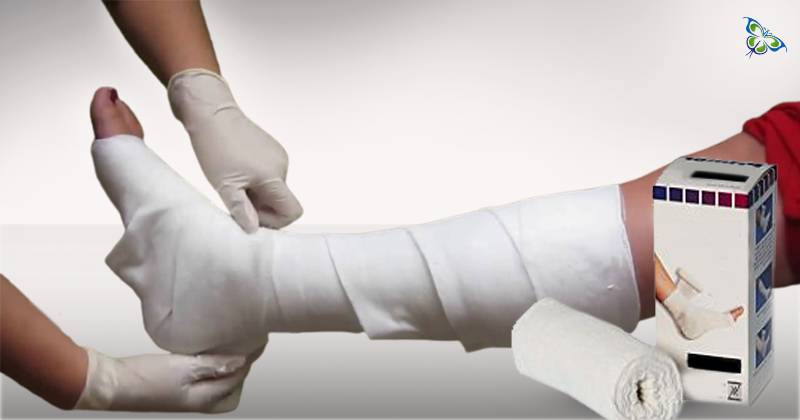
Hello
Select Address

This must be quite an unusual name for bandages! Its purpose, however, is not one, and Unna boots are commonly used in the wound care segment. To begin with, they are a special kind of dressing that’s impregnated with zinc oxide.
Alternatively, in some cases, glycerine or calamine is also infused in Unna boots. This ensures stiffness and rigidity once the bandage ingredients dry. The ultimate purpose is ‘exertion of an effective amount of pressure’.
Why are Unna boots named so?
This bandage is indeed named after a German dermatologist named, Paul Gerson Unna. He was a scientist who specialized in skin complications and hence these bandages have been named after him. During his time (1850-1929), compression bandages were not efficient enough. He, therefore, went on to prepare a gauze bandage that was impregnated with 15% zinc oxide. This combination was placed in glycerine and gelatin-based paste that also had "cooling effects" apart from their other wound healing properties!
The zinc oxide pastes present in these cotton sheets are 'skin-friendly'. They keep away skin irritations, ensure the area is moist, and at the same time promote healing (without forming hardened cakes like some dressing materials).
Unna boots provide a pressure ranging between 20–30mmHg pressure on wound sites. Thus, they are used in ambulatory patients who are suffering from venous ulcers or lymphedema. The pressure that it exerts, works in restricting the calf muscle movement outward while the patient starts walking. This inward pressure stimulates the calf-muscles and in turn, enhances the venous flow too.
It's not for the lymphedema patients only. The unna boots come to use in several other physical conditions as well. Some of them have been discussed here...
• Muscle compression using certain pressure peaks
• Reduction of edema
• Improvement of eczema and pruritus
• Treatment of venous ulcer
Most importantly, Unna boots are used on patients who have mobility and not applicable for wheelchair patients!
There are several contraindications for the use of Unna boots. Firstly, and most importantly, one needs to know that Unna boots are less impactful for bed-ridden patients and the ones on a wheelchair! Besides the need to be avoided in the following cases…
What are the different types of Unna boots?
Such dressings are of different gradations. It depends upon the type of wounds, like, high drainage wounds usually call for dressings that do not have to be changed often. This makes wound treatment cost-effective too. Some patients are more physically active than others. Unna boot bandages that are fitted with Velcro bands to facilitate patients with the interlocking experience are perfect for such active patients.
Unna boots also vary in parameters like –
1. Bandages with higher compression
2. Rolls with higher elasticity
3. Rolls with self-adhesive bandages (usually four bandages)
4. Bandages infused with calamine lotion (to prevent skin itching, irritation, and pain)
[Read more on: wound packing strips]
These bandages can indeed stay in place for up to 7 days. However, if the wound is a highly draining one and is noticed to leak before that period, it should be changed immediately. Even after edema disappears, the Unna boot bandage can remain in place for up to 2 days.
What happens if the Unna boot gets wet?
Your Unna boot dressing should not get wet; if it does, it damages the skin that lies beneath. Get a plastic wrap around your Unna boot before you prepare to take a shower. Preferably sit in a tub with the affected leg (or legs) out. Still in case, if the bandage gets wet, your medical advisor needs to be contacted immediately.
Many of us are still unaware that the Unna boot therapy today, is the #1 compression-therapy option for patients with swellings in their lower extremity. Though it takes a little longer to treat ulcers (it is mainly used for venous stasis dermatitis or venous ulcers) than sprains, strains, or edema, the results are magical! All you need is 'patience'. The Unna boot therapy is usually followed by regular use of compression garments, as advised by your podiatrist.
Validate your login
Sign In
Create New Account